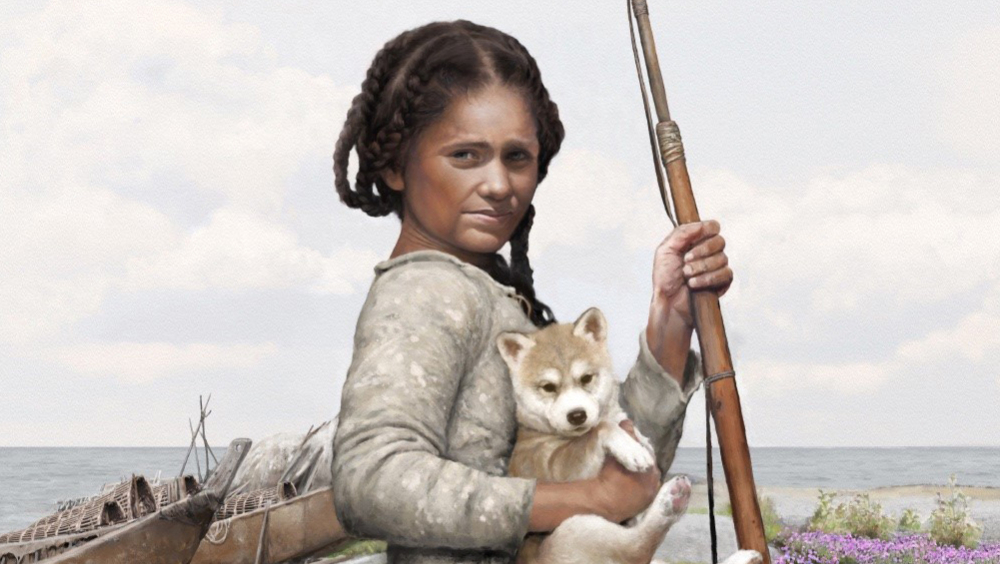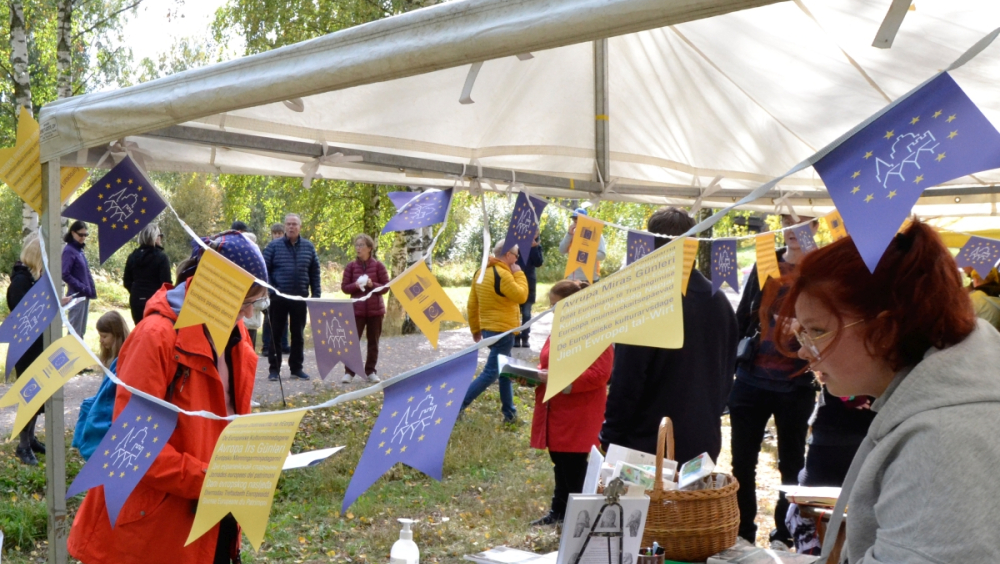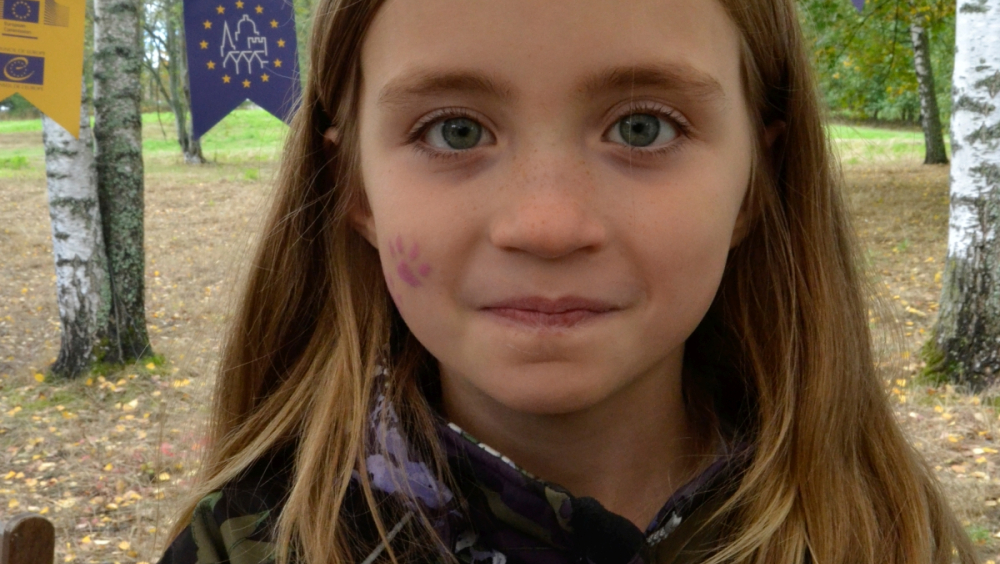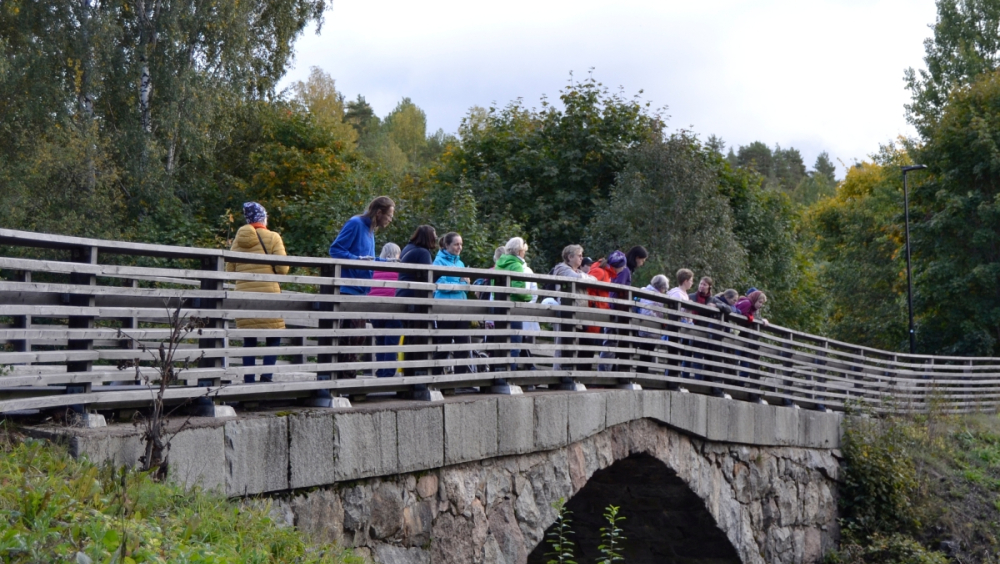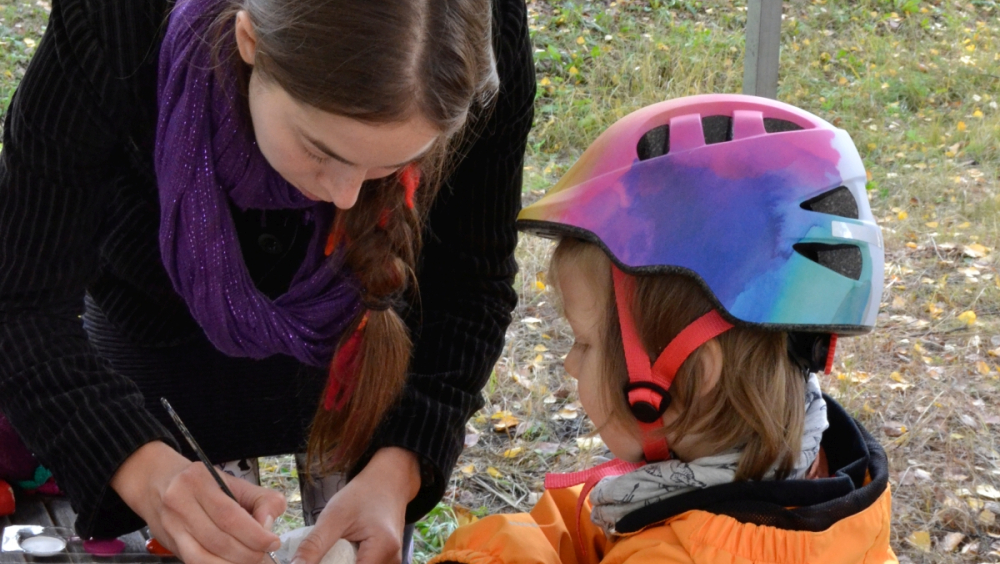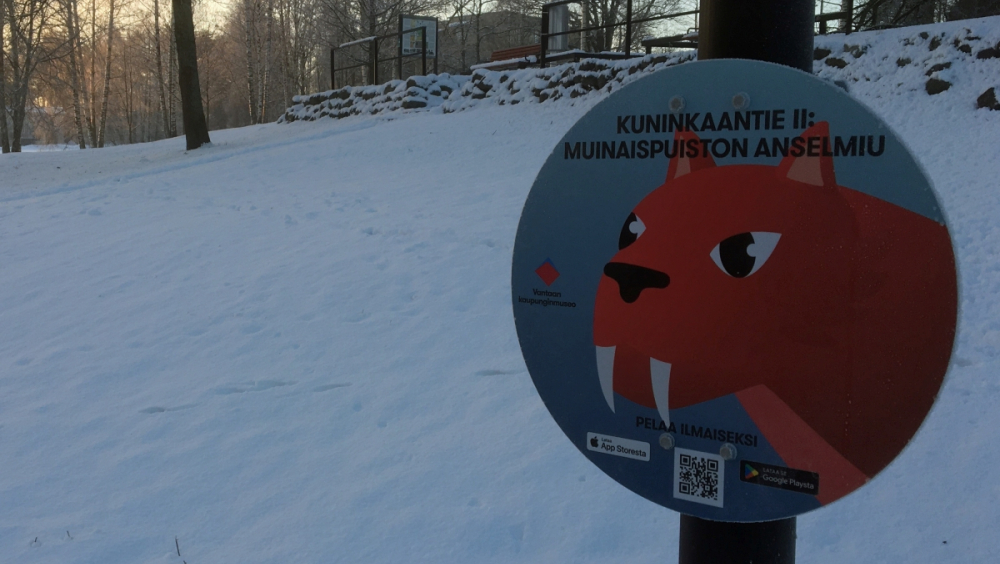Tales of the primeval Stenkulla rock
Vantaa is the most international town in Finland. There are over 100 nationalities living in the city and they speak over 150 languages. A lot of the people have arrived in Vantaa during the last 50 years and don’t feel connected to the deep historical roots of the city. We feel it is time for the primeval Stenkulla rock to paint a picture of its stories about the past:
I have seen happiness and sorrow, hatred and love, newcomers and species gone extinct. A long time has passed and countless generations of people have wandered about. I have heard many different languages. Some of them have disappeared completely, but in all languages I have had a name.
I am going to stay where I am for a long time, for I am in no hurry. I have been watching the humans for as long as they have been around. Now I want to show and tell you what I have seen. I am a small hill which people call the Stenkulla rock.
Before humans arrived there was just ice and snow – a lot of ice and snow. Eventually the ice melted. It felt good to see the sun beams again after such a long time in the darkness underneath all the ice. The ice had been so heavy that it had pressed down the ground beneath it and at first I was under the sea.
Slowly the ground around me rose above sea level and started to flourish. First came small bushes and other small plants, and soon after that trees. Alongside the plants came animals, and after the animals came the blue-eyed people. At first the Blue-eyes just paddled past me in their small canoes. But they lived somewhere nearby. I could sense the smoke rising from their fires. I also heard the Blue-eyes talking to each other. They spoke a language that has disappeared long ago.
Little by little the water level sunk so much that a large sandy beach formed by my foot. In front of me was the open sea and behind me a small, sheltered bay had formed. After a while the Pot makers moved to the beach. The Pot makers were handy and skilled at forming objects from clay.
It was interesting to look at the humans, they had so much to do all the time. Every now and then they climbed upon me and looked over the sea. The Look-out cliff they called me. When they didn’t hunt or sit around the fire telling stories to each other, they made a lot of fine objects of wood, bone, leather, stone and clay.
Soon Comb ceramists speaking a new language came to the shore. They taught the Pot makers to make even more impressive clay pots. The pots became very fine. With small dots and pits they could for instance form patterns of the waterfowl they saw swimming out by the sea on their pots.
The Comb ceramists lived on the beach for hundreds of years. But everything changes and the land kept on rising. The bay by which the Comb ceramists lived grew smaller and smaller. At last it vanished completely and there was only a narrow river left. The Comb ceramists followed the sea and moved away.
The seashore was gone. I had grown so keen on the humans that it felt very lonely without them. That’s why I was very happy when the Battle-axe people arrived and settled at my foot. They had new types of objects made of clay and stone. Their battle axes, which they held very dear, were exceptionally fine.
The river continued to flow by me and offered good living conditions to the inhabitants. Next the Bronze people came. They collected a lot of rocks from the surroundings and built a stone cairn on top of me. In the cairn they buried the ashes of their former chieftain, whose body they had burned on a pyre.
The Bronze people seemed to believe they owned the grounds around me and made the border to their premises by the cairn. They started to call me the Border hill. Although there were warriors among the Bronze people, most of them were ordinary farmers. They hade stone tools and made simple clay pots.
For a long period of time single families lived on the mound in the middle of the field. Later I started calling them Fur hunters. They kept animals, cropped a small field and went out on hunting, fishing or trade trips every now and then. The Fur hunters stopped using bronze except as small pieces of jewelry on their clothes. The clothes were made of wool from their animals and was finer and more colorful than before. Instead of bronze, the Fur hunters used weapons and tools made of a new metal, namely iron.
The humans seemed to get on well by the river flowing next to me. Again, there came new people along the river. They came from the sea to the west. They said they came from a kingdom called Sweden. They spoke yet another language and had a new way of building houses.
Soon the Swedes took over the farm on the mound. A man called Hacke built himself a log house. Because the Swedes built the house on a stony mound, they started calling the house Stenkulla, which means rocky mound, in their own language. And as I lay close to the house, they named me the Stenkulla rock. The village they built was in turn named after Hacke and became Haxböle.
Sometimes the humans faced very hard times. The climate turned colder and rainier and the harvest failed for many years. In the end, people didn’t have food to eat. Many died and I saw a lot of hungry people who had left their homes.
Time started to move so fast that I had a hard time keeping up. The wooden Haxböle bridge over the river was replaced with a bridge made of stone. When they were building the stone bridge they also chopped pieces of rock from me, which they used as building material for the new bridge. It was the first time since the ice age I had gotten smaller.
Soon after the stone bridge had been built, carriages moving by themselves started moving across the bridge. I heard people calling them cars. The stone bridge became insufficient for them, so they built a new wider bridge and a bigger road more suitable for cars. At the same time, lots of people moved to the new high-rise buildings and long row houses beside me. The new inhabitants spoke many languages I’d never heard before.
Nowadays people are in such a hurry, but sometimes they slow down, climb up on top of me and enjoy the nice view. I am in no hurry anywhere. I will stay where I am and see what the humans are up to for at least as long as I’ve done so far.
From old skeletons, researchers have been able to find DNA telling about the genome of the early Europeans. With the help of DNA, the researchers could determine what pigment, hair color and eye color these people had. According to the knowledge we have today, the first people in Scandinavia from around 10,000 years ago typically had black hair, dark skin and blue eyes.
People have been moving around Europe since the early stone age. History and archaeology show that immigration is no new phenomenon. By showing people the long historical dimensions of immigration, it may help everyone to a better understanding of each other and newly arrived inhabitants of the area to feel part of the historical continuum.
History also shows that many different kinds of people from all time periods with a big variety of skin color have lived here since the Stone Age. It makes us see that we are different but equal.
Once a year we celebrate an European Heritage Days event in the park and in 2019 we made a mobile game about the history of the place with the help of an European Heritage Days story grant. The mobile game is still used especially by school classes. People living in the nearby high-rise buildings and row houses also visit the park frequently. Hence the park serves as an excellent platform of teaching European integration in the last 10,000 years.
